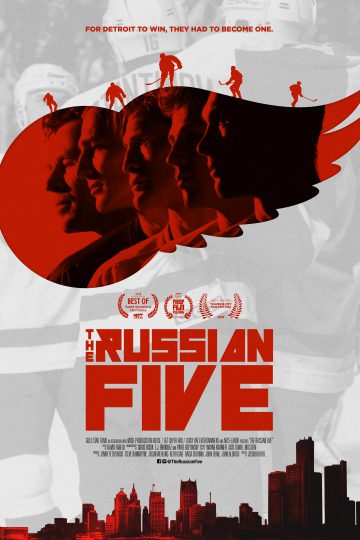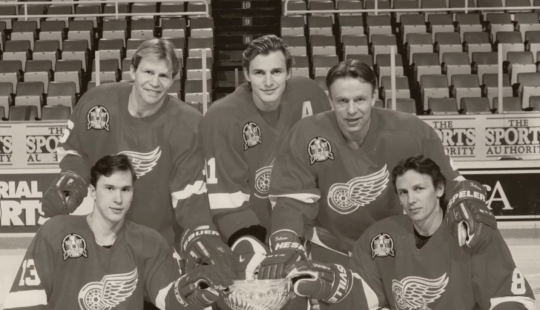Twenty-two years ago the Detroit Red Wings played the Colorado Avalanche in their final regular season matchup. The Avalanche had defeated the Red Wings in the previous season’s conference finals on their way to a Stanley Cup Championship, and the series included a dirty hit on Wings center Kris Draper, which ended his season. As Draper would later put it, “I didn’t know my face was caved in, but I knew it wasn’t good.”
Justice was to be enacted in the game on March 26, 1997.
What was to be later known as the “Brawl” was sparked by Wings center Igor Larionov, aka “The Professor,” one of the Russian Five, who took Avs forward Peter Forsberg to the ice. Then a full line brawl, including both goalies, ensued:
The Wings would come back to win this game in overtime, and it changed not only their season but the future of the franchise, en route to the first of two consecutive Stanley Cup wins. The new documentary The Russian Five traces the background to this incredible run as well as the tragedy and pathos of public pressure, media criticism, and a career-ending accident involving
the Russian players and staff.
The story starts with Sergei Fedorov, one of the most skilled forwards to ever play the game. Fedorov and defenseman Vladimir Konstantinov played for the Russian Red Army teams, and even though they were drafted by Detroit in 1989, they would have to defect from the Soviet Union to play in the NHL. It took patience and planning to get them both to Detroit. But as Sergei Fedorov reflected on his experience as a Soviet player, which included hard work at the hockey camp for 11 months out of the year, when you are at that kind of isolated environment, an “island” for that long, eventually “you want to be free.”
The Red Wings would come to fill out an entire forward line and defensive pairing of Russians, with Larionov and the young Slava Kozlov up front with Fedorov, and perhaps the greatest defenseman in Russian hockey history, Slava Fetisov, joining Konstantinov on the blue line. An earlier documentary, Red Army, follows the career of Fetisov, who was in the twilight of his career by the time got to Detroit. Like that earlier film, The Russian Five juxtaposes not only the playing styles of North American and Soviet players, but casts these differences as proxies for larger cultural, economic, and political differences.
One way to think about how the Russian approach differed from the North American approach is to think about the role of the individual. In the Russian style, the individual was an instrument in the larger machine. The players had positions, it is true, but they always had to be ready to switch roles with another player on the ice, moving smoothly from offense to defense and back again. The Americans and Canadians, by contrast, played a style that emphasized specialization. Defensemen tended to stay at home more, leaving the scoring to the smaller, more agile forwards. These were not absolute differences, of course, and it is possible to find exceptions. But these really were different styles of play. The Russians focused on puck possession, sharing, and skill while the North American game was aggressive, physical, and grinding.
When describing the approach of the Soviet system, Anatoli Tarasov, the father of Russian hockey, would cast it in just these terms: “Our players did not go in for individualism in all the games even with weaker teams. This is an indication of quite stable habits and a high culture of playing, a correct understanding of the game by the Soviet players.” Indeed, “The essence of hockey, in our opinion, would lie in a sensible balance between team work and individual play,” he said.
The Russian Five follows the acculturation of these players to the NHL and their subsequent great success. They would change the NHL, and they would in turn grow as players, leaders, and men in their experience in the greatest hockey league in the world. This film captures a moment in time as the Cold War ends and the thawing relations between the East and West results in a transcendent hockey phenomenon. The Russian Five is a worthy testament to these players’ success and tragedies, their skill and their determination.
Update: Here’s a clip from the film focused on “The Brawl”



